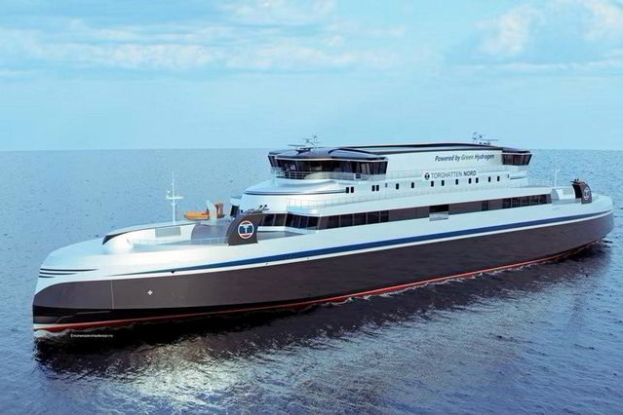
A transport company in Norway has ordered the world’s largest hydrogen ship — two of them — to operate on the country’s longest ferry route.
Torghatten Nord has signed a contract for the construction of the two 117-metre vessels — each able to hold up to 120 cars and 599 passengers — with Norwegian shipyard Myklebust, for delivery in 2026.
The two ferries will use compressed green hydrogen produced by local developer GreenH in the mainland coastal town of Bodø, and be powered by 6.4MW of fuel cells.
The popular route between Bodø and the island of Moskenesøya, is actually a far cheaper and quicker method of transport from the mainland to the picturesque Lofoten Islands — taking three-and-a-quarter hours and 15 mins to travel 166km by sea, with prices starting at NKr250 ($22.70), compared to ten-and-a-half hours and 644km by road.
“There are no other maritime hydrogen projects internationally that come close to the scale and ambitions of this project,” said Torghatten Ord CEO Marius Hansen.
The two Norwegian companies are working with the Norwegian Maritime Authority and classification society Lloyd’s Register to “develop procedures and safety standards for completely new type of ferry”, the company explains in a press release.
“Passenger traffic with hydrogen over such a long and demanding distance has not been carried out anywhere else in the world,” said Torghatten Nord. “The design and technical solutions will safeguard all safety aspects for ferries that travel long distances in exposed waters.”
Hansen added: “Together with the authorities, we are in the process of setting the standard for a completely new class of ships, with a world-class innovation and climate project.”
The vessels were designed by the Norwegian Ship Design Company (NSDC), which began work on the project in 2019.
“The ferries are designed for 100% zero-emission and feature a multi-hybrid propulsion system with hydrogen-electric as the primary mode and diesel-electric as the secondary mode,” said NSDC.
CEO Gjermund Johannessen added: “Extensive safety analyses have been conducted for the onboard hydrogen system to ensure that the ferries are as safe as modern diesel ferries.”(